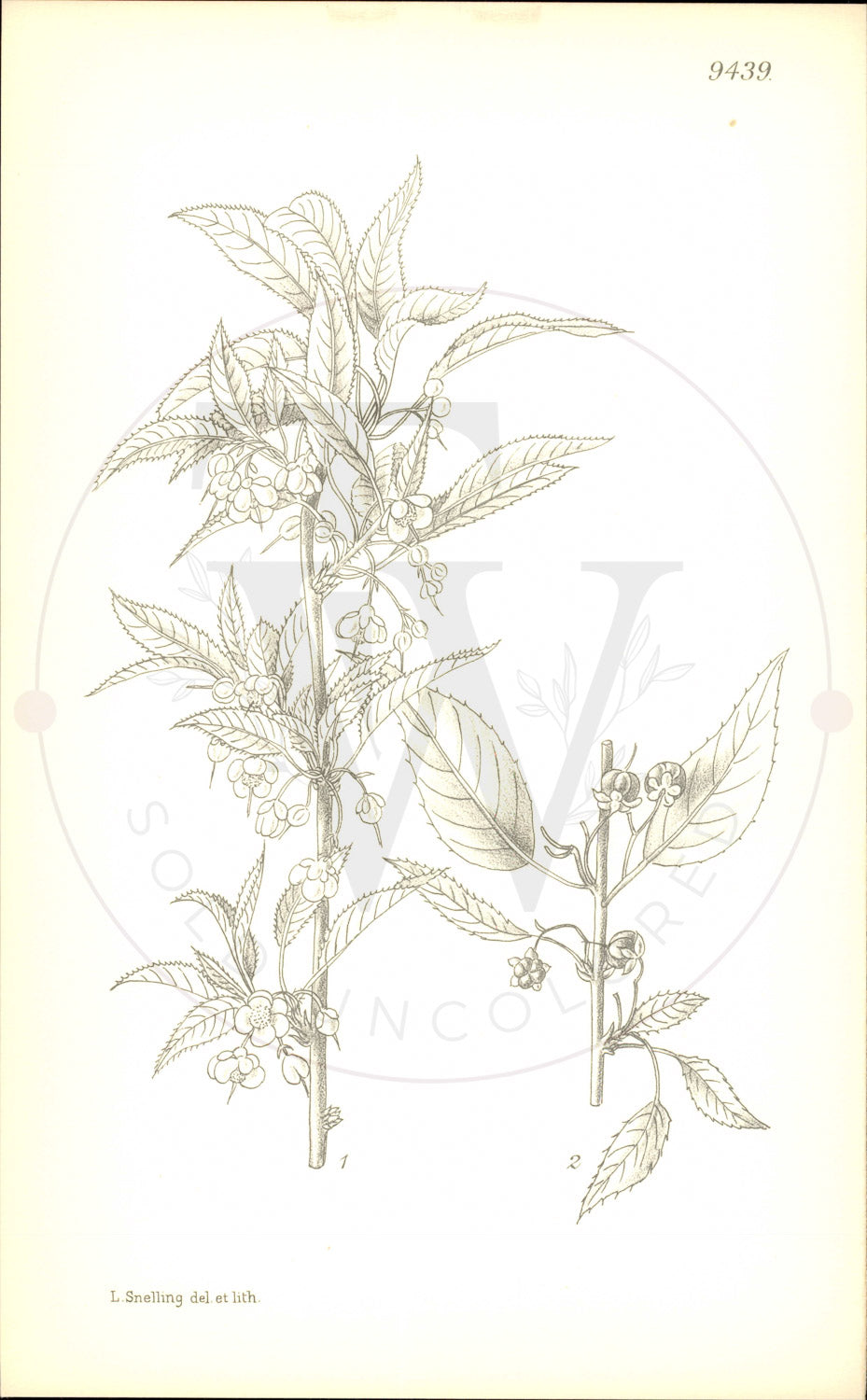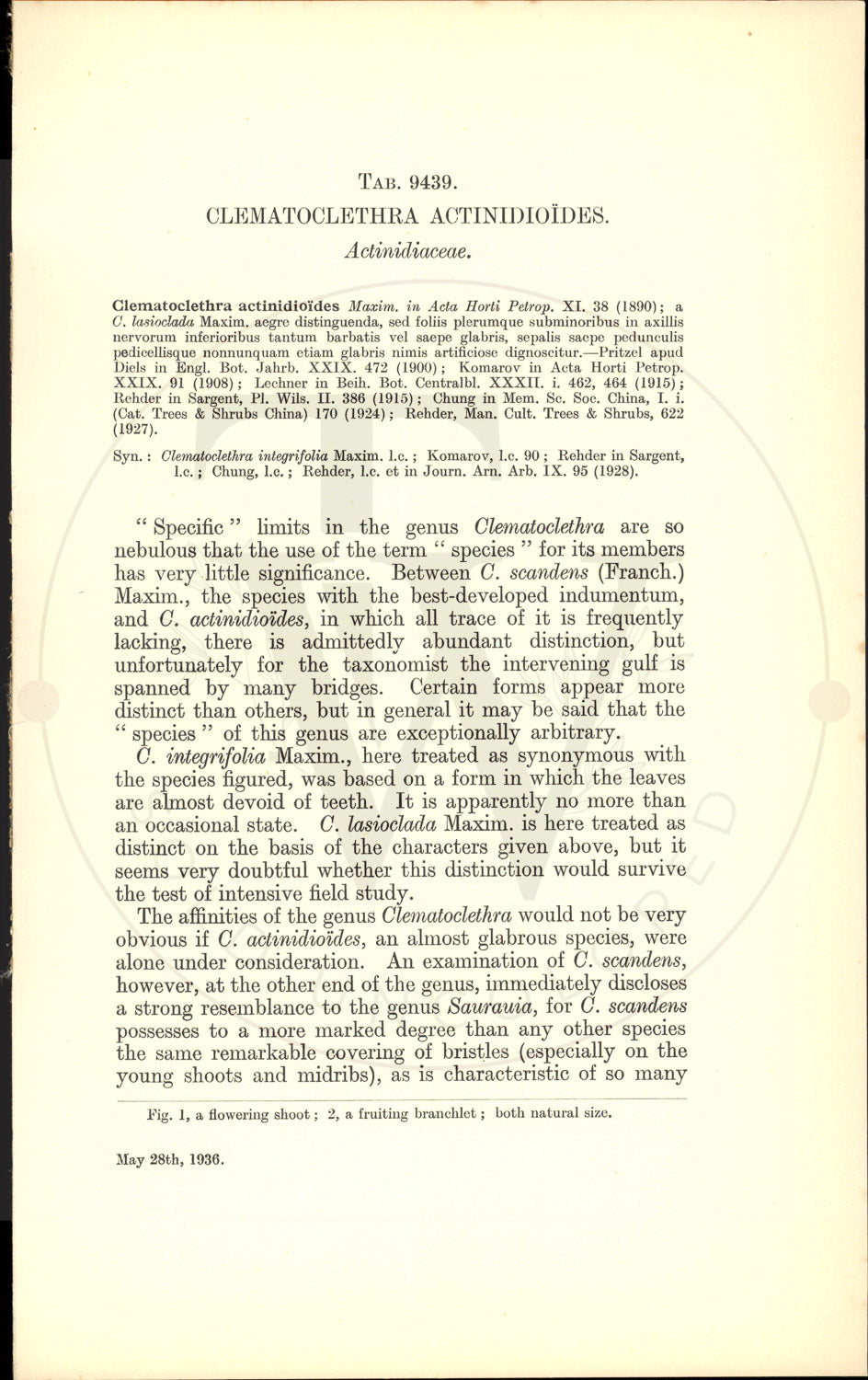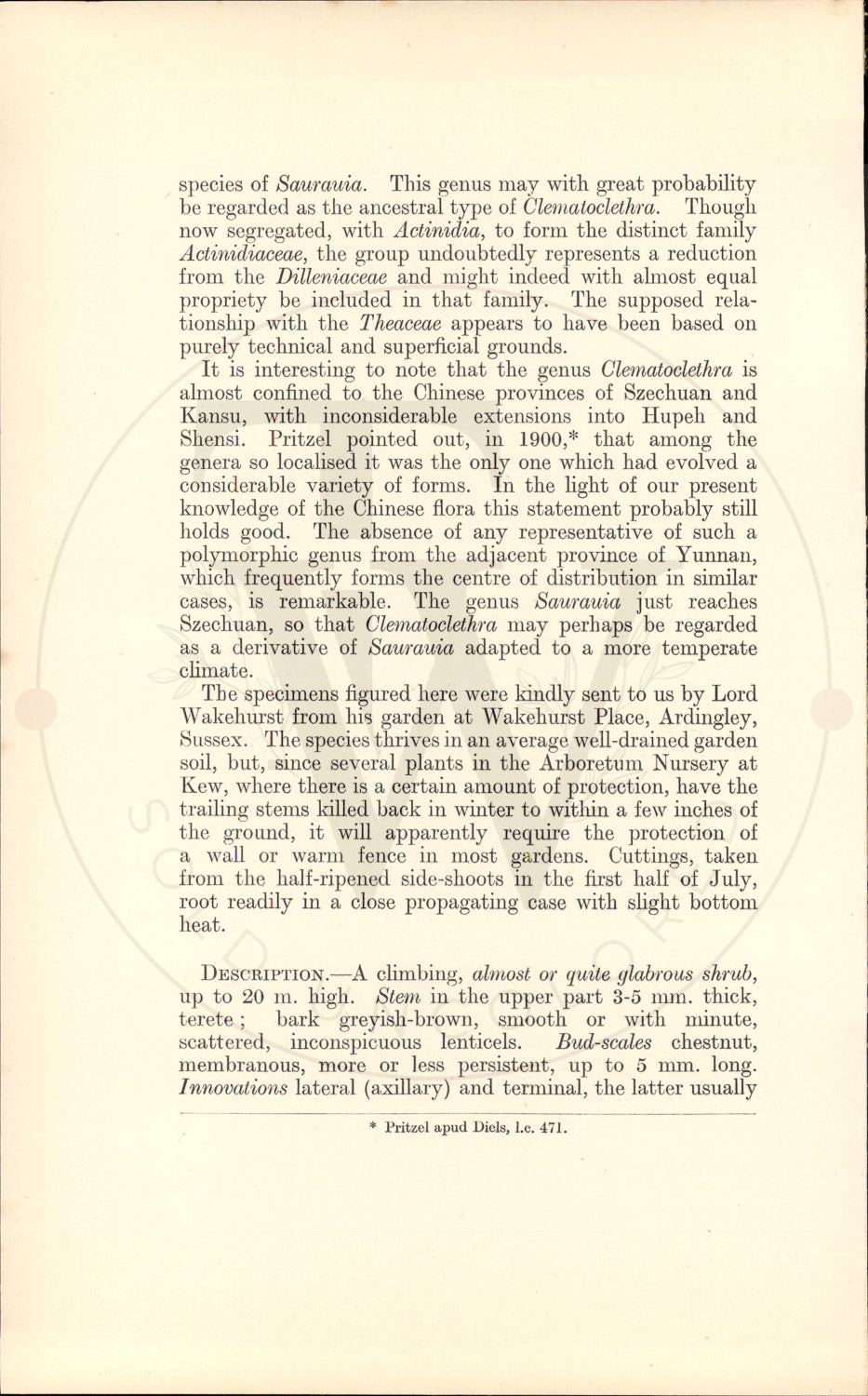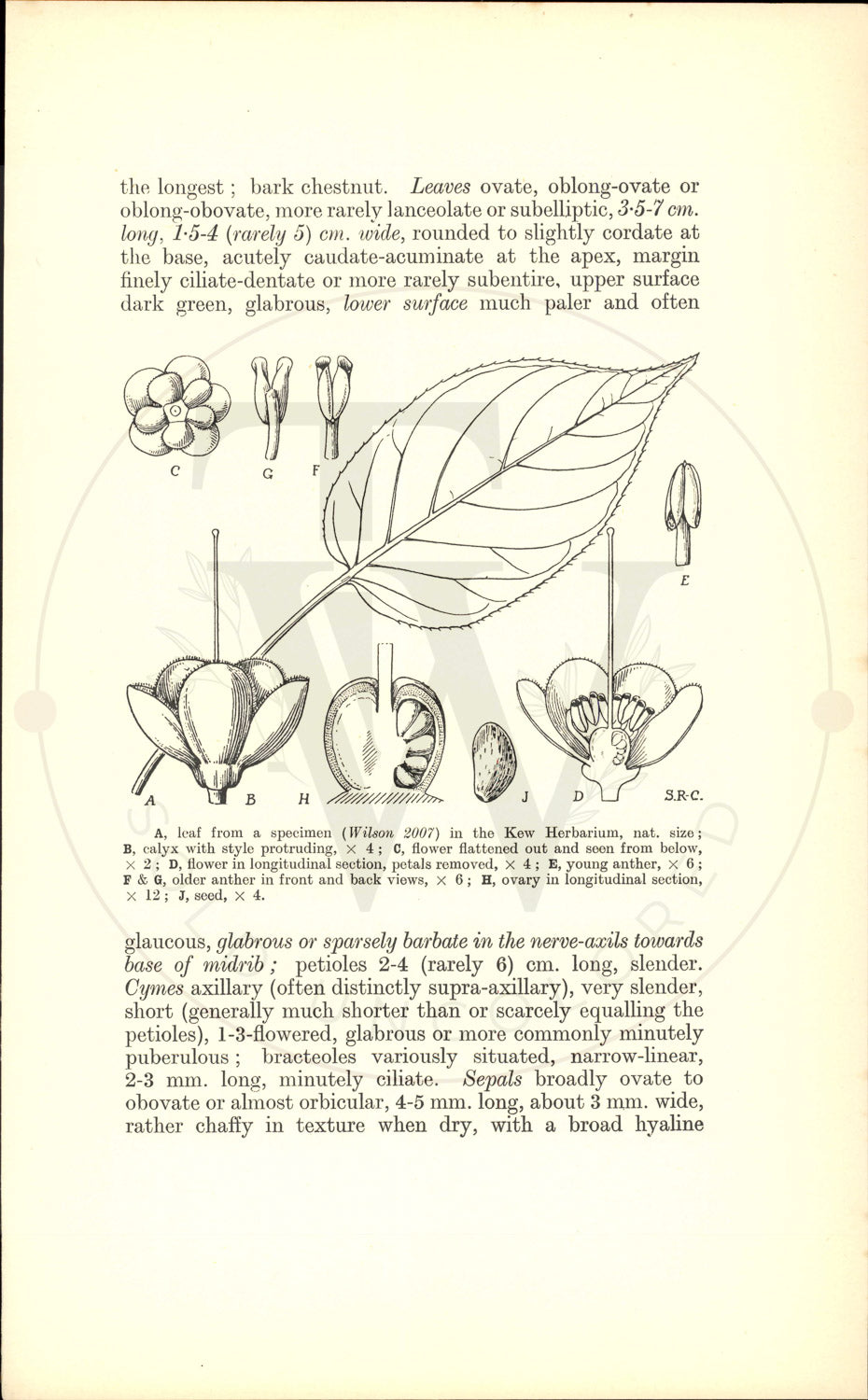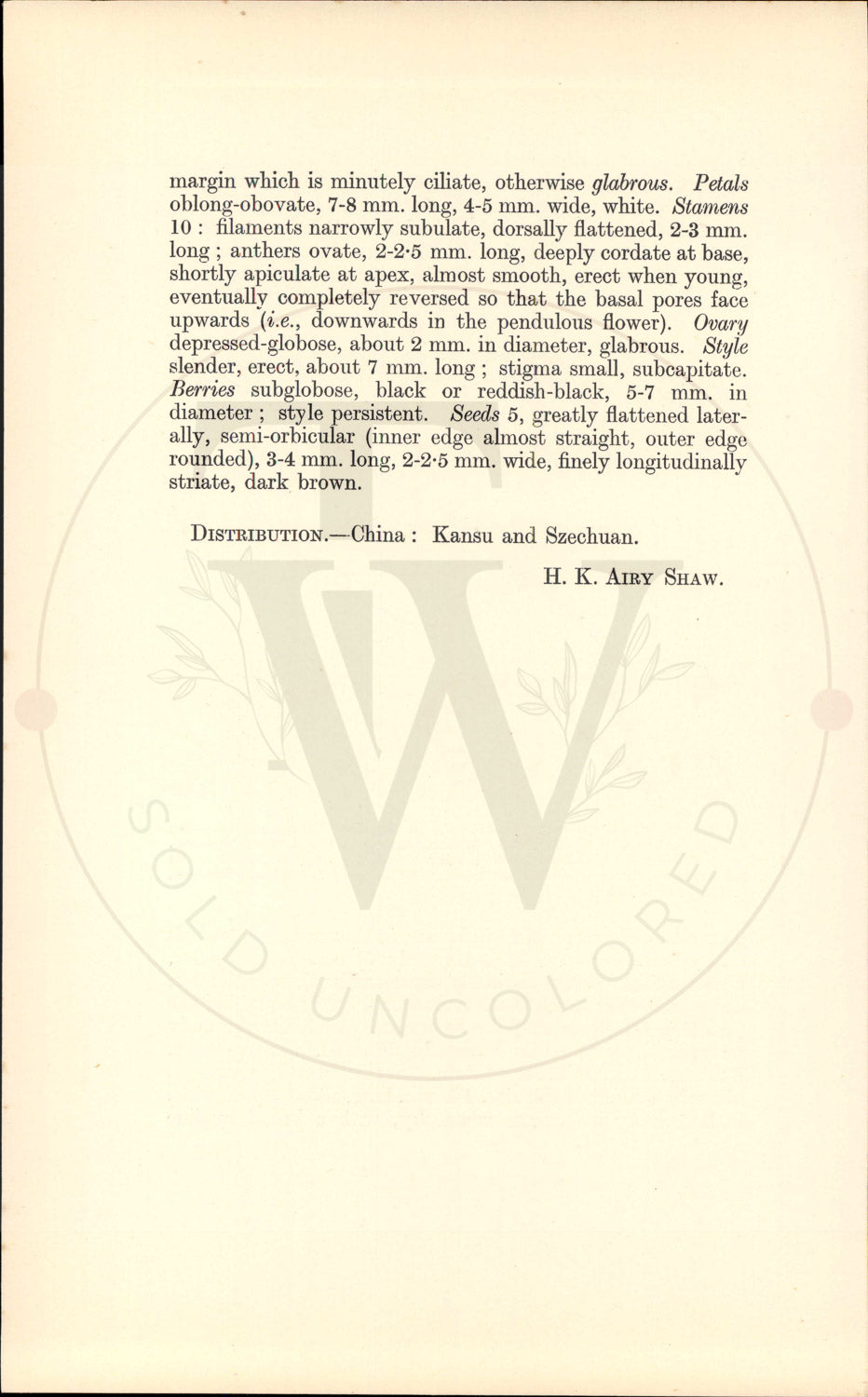Curtis Botanical Magazine
Plate 9439 - Botanical Print
Plate 9439 - Botanical Print
Couldn't load pickup availability
Curtis's Botanical Magazine - Plate 9439
Native Region: China • Publication Date: January 1st, 1934
Distribution: in similar • Tab Author: H. K. AIRY SHAW
Botanical Description
Soil, but, since several plants in the Arboretum Nursery at Kew, where there is a certain amount of protection, have the trailing stems killed back in winter to within a few inches of the ground, it will apparently require the protection of a wall or warm fence in most gardens. Cuttings, taken from the half-ripened side-shoots in the first half of July, root readily in a close propagating case with slight bottom heat. DESCRIPTION. A climbing, almost or quite glabrous shrub, up to 20 m. high. Stem in the upper part 3-5 mm. thick, terete ; bark greyish-brown, smooth or with minute, scattered, inconspicuous lenticels. Bud-scales chestnut, membranous, more or less persistent, up to 5 mm. long. Innovations lateral (axillary) and terminal, the latter usually *Pritzel apud Diels, l.c. 471. the longest; bark chestnut. Leaves ovate, oblong-ovate or oblong-obovate, more rarely lanceolate or subelliptic, 3.5-7 cm. long, 1.5-4 (rarely 5) cm. wide, rounded to slightly cordate at the base, acutely caudate-acuminate at the apex, margin finely ciliate-dentate or more rarely subentire, upper surface dark green, glabrous, lower surface much paler and often YY A G F B H J D E S.R-C. A, leaf from a specimen (Wilson 2007) in the Kew Herbarium, nat. size; B, calyx with style protruding, x 4; C, flower flattened out and seen from below, x 2; D, flower in longitudinal section, petals removed, x 4; E, young anther, x 6; F & G, older anther in front and back views, x 6%; H, ovary in longitudinal section, x 12; J, seed, x 4. glaucous, glabrous or sparsely barbate in the nerve-axils towards base of midrib; petioles 2-4 (rarely 6) cm. long, slender. Cymes axillary (often distinctly supra-axillary), very slender, short (generally much shorter than or scarcely equalling the petioles), 1-3-flowered, glabrous or more commonly minutely puberulous; bracteoles variously situated, narrow-linear, 2-3 mm. long, minutely ciliate. Sepals broadly ovate to obovate or almost orbicular, 4-5 mm. long, about 3 mm. wide, rather chaffy in texture when dry, with a broad hyaline margin which is minutely ciliate, otherwise glabrous. Petals oblong-obovate, 7-8 mm. long, 4-5 mm. wide, white. Stamens 10 filaments narrowly subulate, dorsally flattened, 2-3 mm. long; anthers ovate, 2-2.5 mm. long, deeply cordate at base, shortly apiculate at apex, almost smooth, erect when young, eventually completely reversed so that the basal pores face upwards (i.e., downwards in the pendulous flower). Ovary depressed-globose, about 2 mm. in diameter, glabrous. Style slender, erect, about 7 mm. long; stigma small, subcapitate. Berries subglobose, black or reddish-black, 5-7 mm. in diameter; style persistent. Seeds 5, greatly flattened later- ally, semi-orbicular (inner edge almost straight, outer edge rounded), 3-4 mm. long, 2-2.5 mm. wide, finely longitudinally striate, dark brown. DISTRIBUTION.-China: Kansu and Szechuan. H. K. AIRY SHAW.
Synonyms
Clematoclethra integrifolia Maxim. 1.c.
1.c.
About This Print
Original black and white uncolored botanical print from Curtis's Botanical Magazine (established 1787). This 9000s series print is from unissued publisher stock, never hand-colored, representing the authentic plate as it appeared in the magazine. Edited by Sir Arthur William Hill for The Royal Horticultural Society, London.
Share
